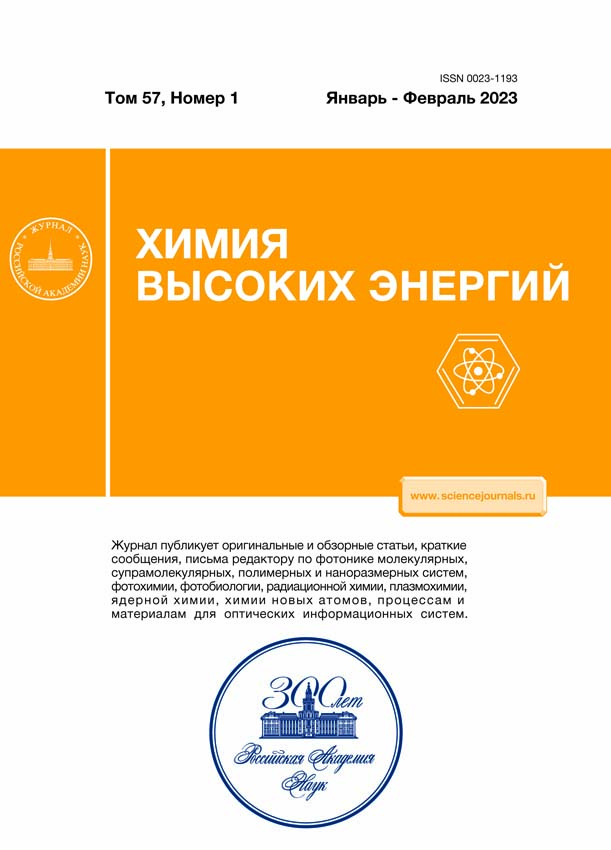Laser Ablation of Styrene–Methacrylate Composites
- Авторлар: Buzin N.V.1, Mukhametova G.M.1, Kholuiskaya S.N.1, Kiselev A.V.1, Kalinichenko V.N.2, Gridnev A.A.1
-
Мекемелер:
- Semenov Federal Research Center Institute of Chemical Physics, Russian Academy of Sciences
- Emanuel Institute of Biochemical Physics, Russian Academy of Sciences
- Шығарылым: Том 57, № 1 (2023)
- Беттер: 73-79
- Бөлім: ЛАЗЕРНАЯ ХИМИЯ
- URL: https://kld-journal.fedlab.ru/0023-1193/article/view/661533
- DOI: https://doi.org/10.31857/S0023119323010023
- EDN: https://elibrary.ru/DDSTZI
- ID: 661533
Дәйексөз келтіру
Аннотация
Various styrene–methacrylate composites with mineral fillers have been studied as a substrate for the deposition of copper tracks on surfaces after laser ablation. It has been revealed that both insufficient laser heating of the substrate with applied varnish and its overheating have a negative effect on chemical copper plating. The use of crosslinked styrene–methacrylate polymers makes it possible to achieve stable copper plating of the laser-treated surface of the varnish-coated substrate. It has been shown that with an appropriate selection of ablation parameters, finely divided minerals, such as talc, celadonite, aquamarine, shungite, chromia, and iron oxide (ocher), can be used as varnish filler for chemical copper plating of laser-treated parts of the substrate.
Негізгі сөздер
Авторлар туралы
N. Buzin
Semenov Federal Research Center Institute of Chemical Physics, Russian Academy of Sciences
Email: 99gridnev@gmail.com
Moscow, 119334 Russia
G. Mukhametova
Semenov Federal Research Center Institute of Chemical Physics, Russian Academy of Sciences
Email: 99gridnev@gmail.com
Moscow, 119334 Russia
S. Kholuiskaya
Semenov Federal Research Center Institute of Chemical Physics, Russian Academy of Sciences
Email: 99gridnev@gmail.com
Moscow, 119334 Russia
A. Kiselev
Semenov Federal Research Center Institute of Chemical Physics, Russian Academy of Sciences
Email: 99gridnev@gmail.com
Moscow, 119334 Russia
V. Kalinichenko
Emanuel Institute of Biochemical Physics, Russian Academy of Sciences
Email: 99gridnev@gmail.com
Moscow, 119334 Russia
A. Gridnev
Semenov Federal Research Center Institute of Chemical Physics, Russian Academy of Sciences
Хат алмасуға жауапты Автор.
Email: 99gridnev@gmail.com
Moscow, 119334 Russia
Әдебиет тізімі
- Adelaar H. A method for plating a copper interconnection circuit on the surface of a plastic device. Pat. 2267184 EP. 2010.
- Heininger N. // J. Microwave. 2012. V. 6. № 1. P. 46.
- Huske M., Kickeilhaim J., Muller J., Eber G. // Mater. Sci. 2002. V. 38. № 8. P. 51.
- URL: https://www.lpkfusa.com/products/mid/articles_and_technical_papers/ сайт фирмы “LKPF”, 2021 (дата обращения: 23.08.2021).
- Goosey M. Laser-activated dielectric material and method for using the same in an electroless deposition process. Pat. 0212632 GB. 2003.
- Balzereit S., Proes F., Altstadt V., Emmelmann C. // Mater. Sci. 2018. V. 23. P. 347. doi: 10-1016/j-addma.2018.08.016
- Schrauwen B.A.G. Polycarbonate Composition for laser direct structuring. Pat. 3898808A1 EP. 2020.
- Yu Z., Wang J.H., Li Y., Li Y. // Polym. Eng. Sci. 2020.V. 60. № 4. P. 860. https://doi.org/10.1002/pen.25345
- Kim K., Lee J., Ryua S. Kim J. // RSC Advances. 2018. V. 8. № 18. P. 9933. https://doi.org/10.1039/c8ra00967h
- Jiratti T., Mavinkere R.S., Suchart S., Catalin I.P. // Polymers. 2020. V. 12. № 6. P. 1408. https://doi.org/10.3390/polym12061408
- Xu H., Zhang J., Feng J., Zhou T. // Ind. Eng. Chem. Res. 2021. V. 60. № 24. P. 8821. https://doi.org/10.1021/acs.iecr.1c01668
- Rytlewski P., Jagodzinski B., Karasiewicz I.N., Augustyn P., Kaczor D., Malinowski R., Szablinski K., Mazurkiewicz M., Moraczewski K. // Materials. 2020. V. 13. № 10. P 2224. https://doi.org/10.3390/ma13102224
- Zhang J., Zhou T., Wen L., Zhang A. // ACS App. Mater. Inter. 2016. V. 8. № 49. P. 33999. https://doi.org/10.1021/acsami.6b11305
- Zhang J., Zhou T., Wen Y. // ACS App. Mater. Inter. 2017. V. 9. № 10. P. 8996. https://doi.org/10.1021/acsami.6b15828
- Пивоваров Д.А., Голубчикова Ю.Ю., Ильин А.П. // Изв. Томск. политех. университета // 2012. Т. 321. № 3. С. 11.
Қосымша файлдар













